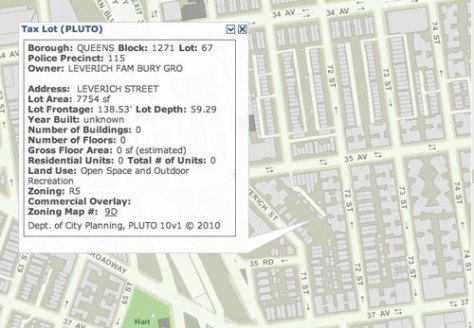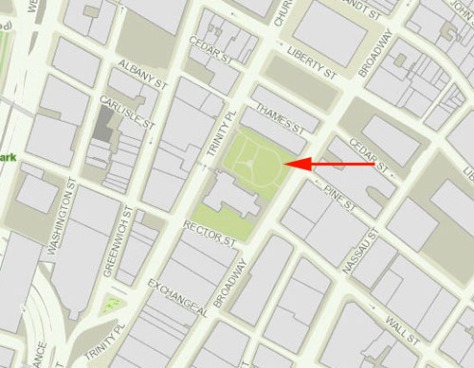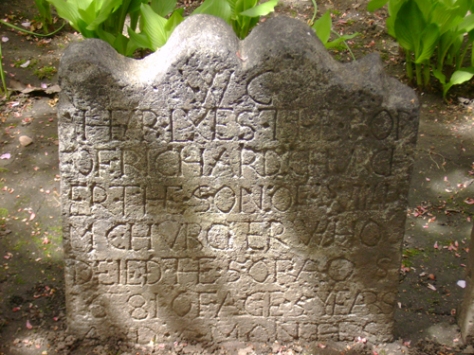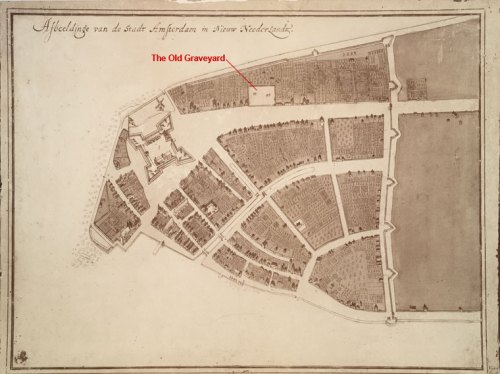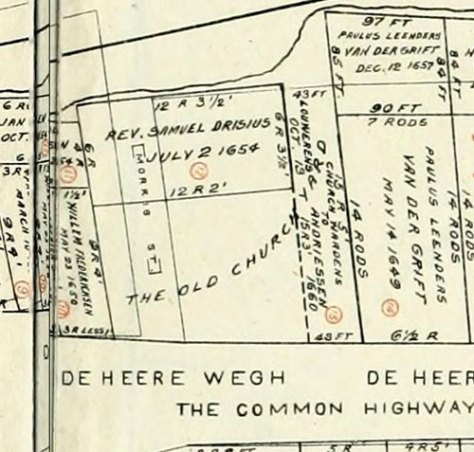
In 1931, the City of New York removed remains from a historic Native American cemetery in Little Neck, Queens, to allow for widening of Northern Boulevard between Douglaston Parkway and the Queens-Nassau county border. The cemetery was the property of members of the Waters family of Little Neck, who were of Matinecock, Shinnecock, and Montauk ancestry. James Waters (Chief Wild Pigeon), a leader in the Long Island Native American community, fought the removal. Waters reportedly lived to the rear of the cemetery and had written about the site when it was surveyed by the Queens Topographical Bureau in 1919.
The 1919 survey of the cemetery identified 13 graves at the site. Only six headstones bore inscriptions, with dates on the headstones ranging from 1859 to 1904; all but one of these were for members of the Waters families. One of the headstones recorded during the survey was for Charles Waters, who died in Oct. 1896 and whose death was reported in the Brooklyn Daily Eagle:
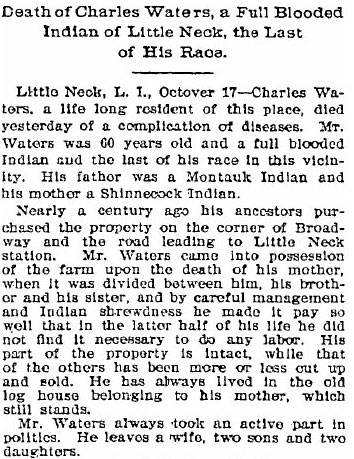
Opposition by Chief Wild Pigeon and others delayed removal of the graves for several years, but in October 1931 the disinterrment proceeded and the remains of about 30 individuals were subsequently reinterred in a plot in the cemetery of the nearby Zion Episcopal Church of Douglaston. A boulder split in two, with a tree growing in between, marks the reburial site and is inscribed “Here rest the last of the Matinecoc.” The site of the old Indian cemetery is now occupied by buildings that currently house a realty office and a restaurant.

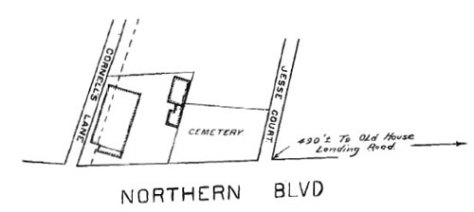



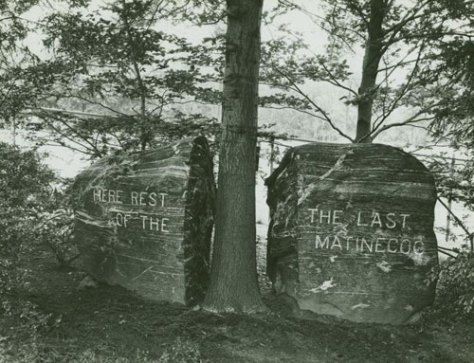
Sources: Hyde’s 1913 Atlas of the Borough of Queens 3:Pl.21; Description of Private and Family Cemeteries in the Borough of Queens 42-44; “Queens Indians Agree to Removal of Bodies,” New York Times, April 24, 1927; “Indian Cemetery in Queens Excavated for Boulevard,” Brooklyn Standard Union Oct. 16, 1931; “Collection and Use of Indigenous Human Remains” (Sanders 2005), 141-143; NYCityMap.




